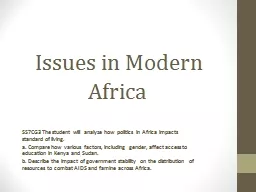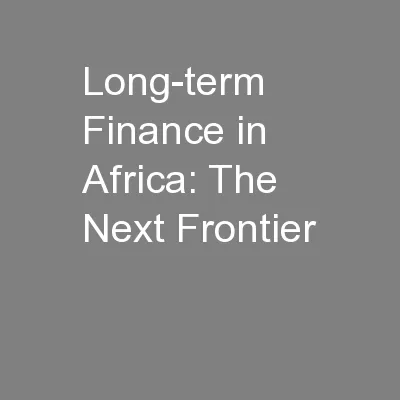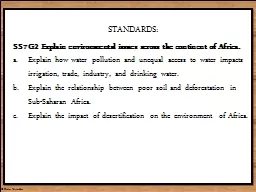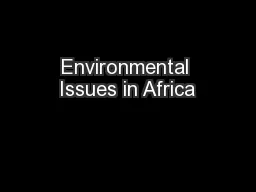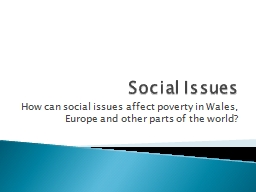PPT-Issues in Modern Africa
Author : celsa-spraggs | Published Date : 2018-12-22
SS7CG3 The student will analyze how politics in Africa impacts standard of living a Compare how various factors including gender affect access to education in
Presentation Embed Code
Download Presentation
Download Presentation The PPT/PDF document "Issues in Modern Africa" is the property of its rightful owner. Permission is granted to download and print the materials on this website for personal, non-commercial use only, and to display it on your personal computer provided you do not modify the materials and that you retain all copyright notices contained in the materials. By downloading content from our website, you accept the terms of this agreement.
Issues in Modern Africa: Transcript
Download Rules Of Document
"Issues in Modern Africa"The content belongs to its owner. You may download and print it for personal use, without modification, and keep all copyright notices. By downloading, you agree to these terms.
Related Documents

